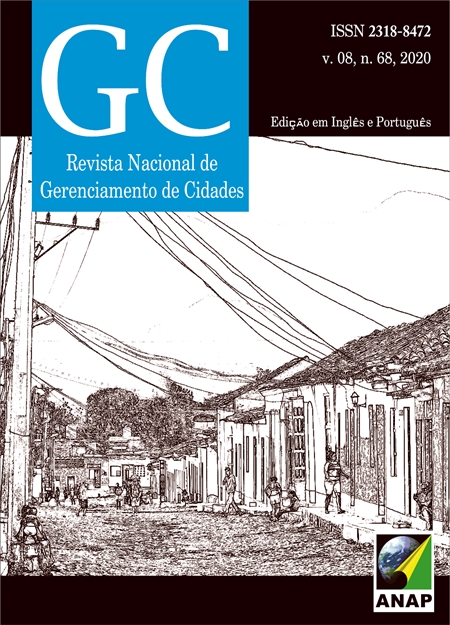Urban ecological network
DOI:
https://doi.org/10.17271/2318847286820202730Palavras-chave:
Protected Areas, Urban planning, Graph Theory.Resumo
Protected Areas (PAs) have been implemented to preserve the remnants of native vegetation, playing a fundamental role in biodiversity conservation. For PAs to be potentially efficient, they must connect to other PAs and/or other remnants in the anthropic landscape, with the matrix permeability being an imperative factor in the dispersion of species, seeds, and pollens. The study's objective was to delineate an ecological network of protected areas inserted in an urban landscape. Geoprocessing and Graph Theory techniques were used to assess functional connectivity between PAs. The focus species used were forest birds, which are endemic to the Atlantic Forest. The information about dispersion capabilities came from the consultation of experts and resulted in a resistance surface. The dispersion model simulation in the landscape resulted in the least-cost path (LCP) and designed the urban ecological network. The LPC was characterized considering the buffer equal to 100m width. The resistance values for each land-use/land-cover, representing endemic bird species of the Atlantic Forest, were equal to one for the native forest located within the PAs. The LCPs were designed by 136 connectors, mostly by native forest (61.3%) and anthropic grasslands (21%). The riparian forests are an essential part of the LCP. The promotion of connectivity between PAs in an anthropic landscape needs the effectiveness of ecological restoration and/or conservation actions and matrix permeability analysis. The connection between PAs by ecological networks must be implemented as a conservation strategy in cities concerning the current era of urban expansion.Downloads
Os dados de download ainda não estão disponíveis.
Referências
Publicado
22-12-2020
Edição
Seção
Artigos Completos
Como Citar
RIBEIRO, Marina Pannunzio; MELLO, Kaline de; VALENTE, Roberta Averna. Urban ecological network. Revista Nacional de Gerenciamento de Cidades, [S. l.], v. 8, n. 68, 2020. DOI: 10.17271/2318847286820202730. Disponível em: https://publicacoes.amigosdanatureza.org.br/index.php/gerenciamento_de_cidades/article/view/2730. Acesso em: 16 jan. 2026.















